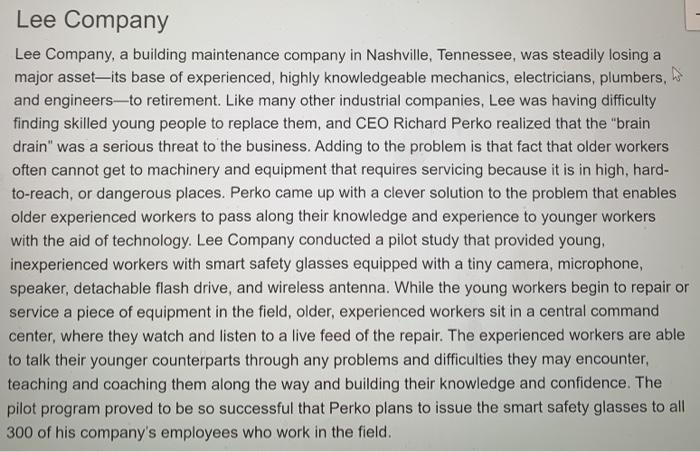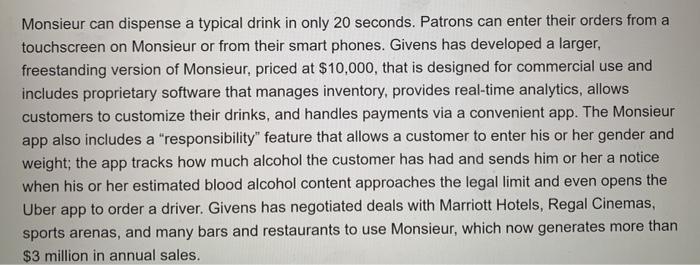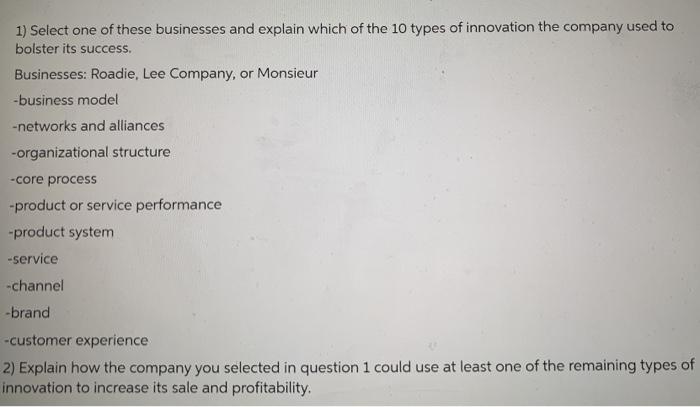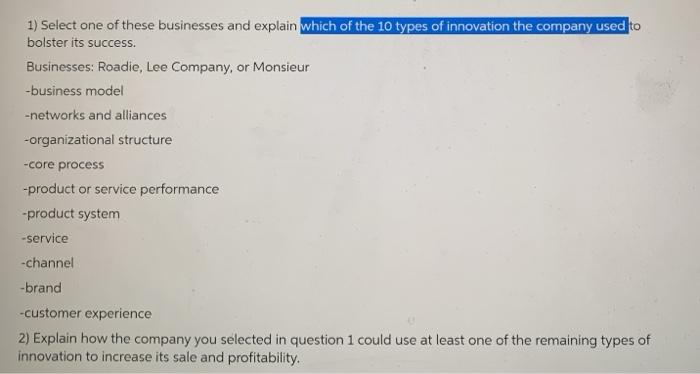Lee Company Lee Company, a building maintenance company in Nashville, Tennessee, was steadily losing a major assetits base of experienced, highly knowledgeable mechanics, electricians, plumbers, and engineersto retirement. Like many other industrial companies, Lee was having difficulty finding skilled young people to replace them, and CEO Richard Perko realized that the "brain drain" was a serious threat to the business. Adding to the problem is that fact that older workers often cannot get to machinery and equipment that requires servicing because it is in high, hard- to-reach, or dangerous places. Perko came up with a clever solution to the problem that enables older experienced workers to pass along their knowledge and experience to younger workers with the aid of technology. Lee Company conducted a pilot study that provided young, inexperienced workers with smart safety glasses equipped with a tiny camera, microphone, speaker, detachable flash drive, and wireless antenna. While the young workers begin to repair or service a piece of equipment in the field, older, experienced workers sit in a central command center, where they watch and listen to a live feed of the repair. The experienced workers are able to talk their younger counterparts through any problems and difficulties they may encounter, teaching and coaching them along the way and building their knowledge and confidence. The pilot program proved to be so successful that Perko plans to issue the smart safety glasses to all 300 of his company's employees who work in the field. Roadie When Marc Golin, cofounder of Kabbage, a small business lender, had to get tile from his home in Atlanta, Georgia, to a renovation project at his condominium in Florida, he did not have the time to make the drive himself. "Someone from Atlanta probably would be driving to Florida and could deliver the materials for him," he thought to himself. Then a grander realization hit him: With 250 million cars on the road every day, someone is going somewhere all the time and could deliver packages to a destination to which they were already headed. That revelation led Golin to launch Roadie, an app-based peer-to-peer business that allows customers to ship items (and now pets) in the vehicles of people who happen to be going to a particular destination. Depending on distance and the size of the item, prices range from $8 to $200. Drivers get 80 percent of the fee, and Roadie collects the remainder, minus a nominal fee to cover insurance. In its first year, Roadies' app has been downloaded 260,000 times, and 20,000 drivers in all 50 states have signed on. Annual sales at Roadie, which is competing with established shipping giants such as UPS and the U.S. Postal Service, are approaching $1 million. Monsieur When Barry Givens was a student in mechanical engineering at Georgia Tech University, he and his roommate arrived at a bar early so they could get a good seat to watch the NBA Finals. Because the bar was so crowded, their drinks did not show up for two hours, during which time the two came up with an idea for a machine that could dispense simple drinks quickly so that patrons would not have to wait for bartenders to fill their orders. After Givens graduated, he worked for brief stints at large cosporations but decided to focus on the idea of a robotic bartender. He sold his house and car to raise capital, and he and his buddy built a prototype of a tabletop box they named Monsieur that holds eight liquor bottles and is capable of mixing up to 300 different drinks. Givens loaned the prototype to a friend for a party; not only was it a huge hit, but it also attracted the attention of one of the guests, an angel investor who provided $40,000 in equity capital for the fledgling business. To fuel the company's growth, Givens then raised $140,000 in a Kickstarter campaign, which led to a $2 million investment from venture capital funds. Monsieur can dispense a typical drink in only 20 seconds. Patrons can enter their orders from a touchscreen on Monsieur or from their smart phones. Givens has developed a larger, freestanding version of Monsieur, priced at $10,000, that is designed for commercial use and includes proprietary software that manages inventory, provides real-time analytics, allows customers to customize their drinks, and handles payments via a convenient app. The Monsieur app also includes a "responsibility" feature that allows a customer to enter his or her gender and weight; the app tracks how much alcohol the customer has had and sends him or her a notice when his or her estimated blood alcohol content approaches the legal limit and even opens the Uber app to order a driver. Givens has negotiated deals with Marriott Hotels, Regal Cinemas, sports arenas, and many bars and restaurants to use Monsieur, which now generates more than $3 million in annual sales. 1) Select one of these businesses and explain which of the 10 types of innovation the company used to bolster its success. Businesses: Roadie, Lee Company, or Monsieur -business model -networks and alliances -organizational structure -core process -product or service performance -product system -service -channel -brand -customer experience 2) Explain how the company you selected in question 1 could use at least one of the remaining types of innovation to increase its sale and profitability, 1) Select one of these businesses and explain which of the 10 types of innovation the company used to bolster its success. Businesses: Roadie, Lee Company, or Monsieur -business model -networks and alliances -organizational structure -core process -product or service performance -product system -service -channel -brand -customer experience 2) Explain how the company you selected in question 1 could use at least one of the remaining types of innovation to increase its sale and profitability












